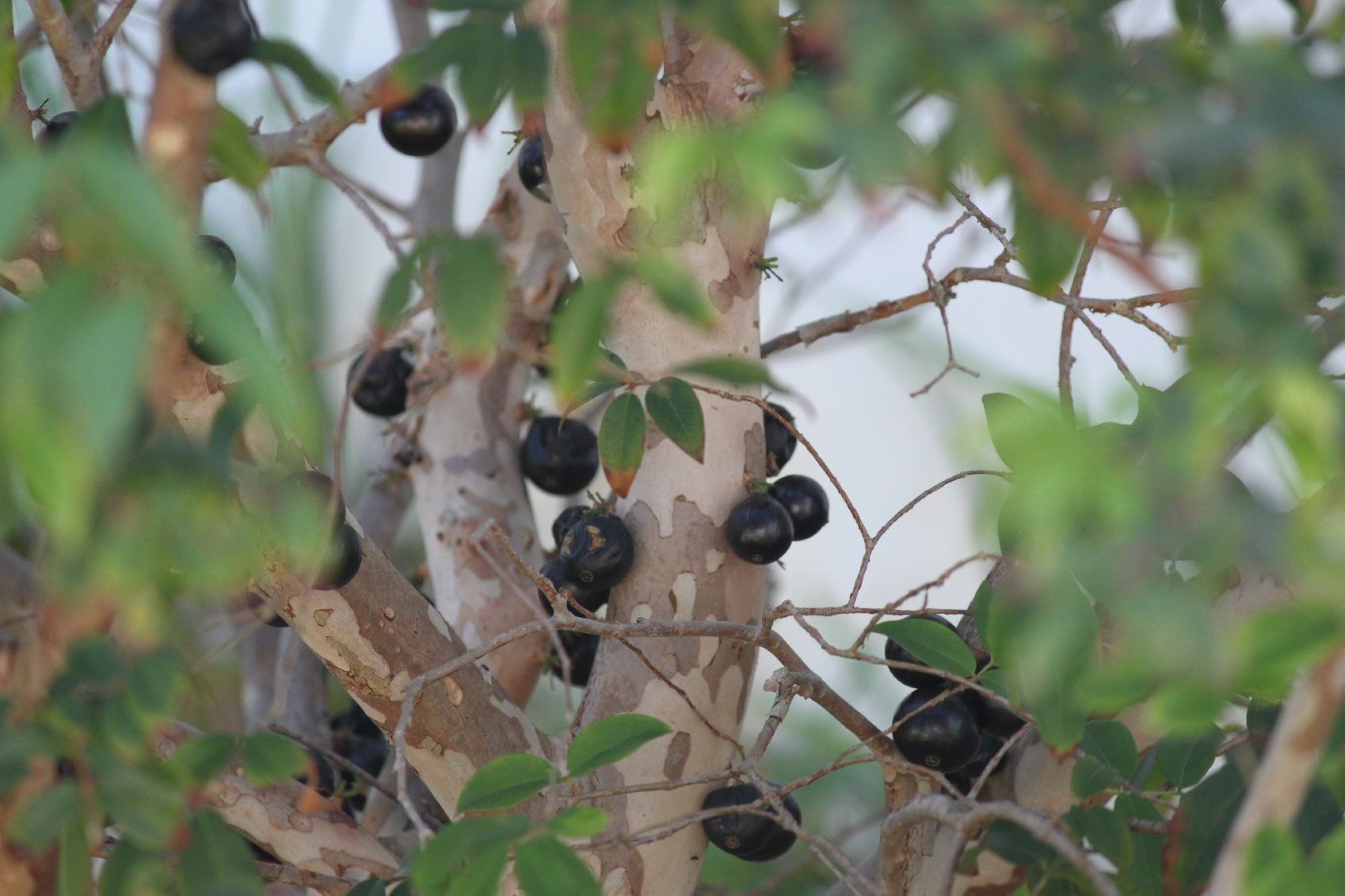Jaboticaba Tree Care: Information About Jaboticaba Fruit Trees

What is a jaboticaba tree? Little known outside of its native region of Brazil, jaboticaba fruit trees are members of the myrtle family, Myrtaceae. They are very interesting trees in that they bear fruit on old growth trunks and branches, making the tree look much like it's covered with purple cysts.
What is a Jaboticaba Fruit Tree?
As mentioned, the jaboticaba fruit tree bears its fruit along old growth branches and trunks rather than along new growth as in most other fruit trees. The 1 to 4 inch (2.5-10 cm.) long leaves of the jaboticaba begin as salmon colored when young and, upon maturity, deepen into a dark green. The young foliage and branchlets are lightly haired. Its flowers are a subtle white, resulting in dark, cherry-like fruit that can be eaten right off the tree or made into preserves or wine. Fruit may be borne either singly or in dense clusters and is initially green, becoming dark purple to almost black when ripe and approximately one inch (2.5 cm.) in diameter. The edible berry is composed of a whitish, jelly-like pulp containing one to four flat, oval seeds. The fruit matures rapidly, usually within 20 to 25 days from flowering. The berry has been described as being much like a Muscadine grape, except the seed similarity and tastes both slightly acidic and faintly spicy. The tree flowers intermittently throughout the year and is an evergreen, often used as a specimen tree, edible fruit tree, shrub, hedge, or even as a bonsai.
Jaboticaba Tree Info
A popular fruit bearer in its native Brazil, jaboticaba's name is derived from the Tupi term “jabotim,” which means “like turtle fat” in reference to its fruit pulp. In Brazil the tree thrives from sea level to about 3,000 feet (914 m.) in altitude. Additional jaboticaba tree info tells us that the specimen is a slow growing tree or shrub that reaches heights of between 10 and 45 feet (3-14 m.). They are frost intolerant and sensitive to salinity. Jabotica fruit trees are related to the Surinam Cherry, Java Plum, and Guava. Like the guava, the thin outer bark of the tree flakes off, leaving lighter colored patches.
How to Grow Jaboticaba Fruit Trees
Intrigued? The question is how to grow a jaboticaba tree. Although jaboticabas are not self-sterile, they do better when planted in groups. Propagation is usually from seed, although grafting, root cuttings, and air layering are successful as well. The seeds take about 30 days to germinate at an average temp of 75 degrees F. (23 C.). The tree can be grown in USDA plant hardiness zones 9b to 11.
Jaboticaba Tree Care
A slow growing tree, jaboticaba requires medium to high sun exposure and will thrive in a wide range of soil mediums. In high pH soils, however, additional fertilization should be applied. In general, feed the tree three times a year with a complete fertilizer. Additional jaboticaba tree care may be needed for iron deficiencies. In this case, a chelated iron can be applied. The tree is susceptible to the usual culprits:
Although fruiting occurs throughout the year, the largest yields are in late March and April with hundreds of fruits per mature tree. In fact, a mature tree may produce 100 pounds (45 kg.) of fruit in the course of the season. Be patient though; jaboticaba fruit trees may take up to eight years to fruit.
Sign up for the Gardening Know How newsletter today and receive a free copy of our e-book "How to Grow Delicious Tomatoes".

Amy Grant has been gardening for 30 years and writing for 15. A professional chef and caterer, Amy's area of expertise is culinary gardening.
